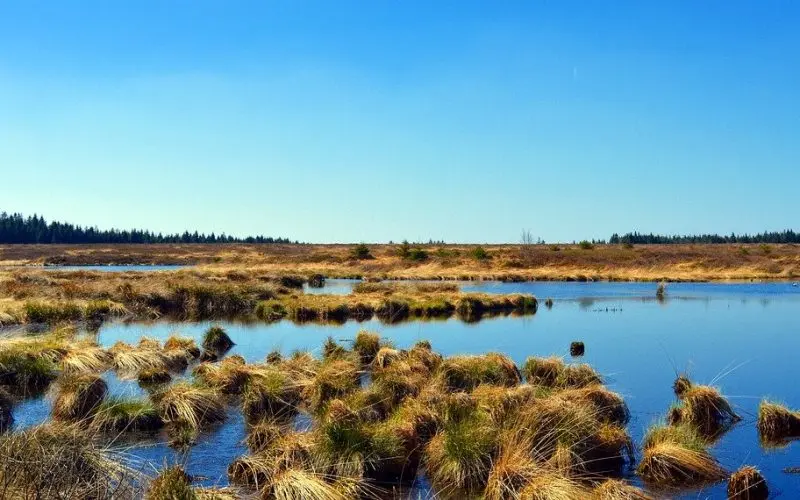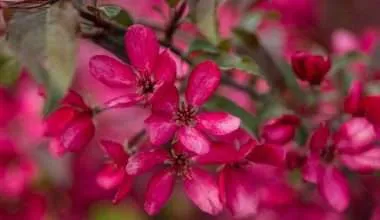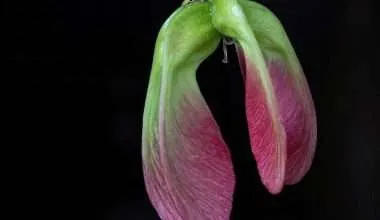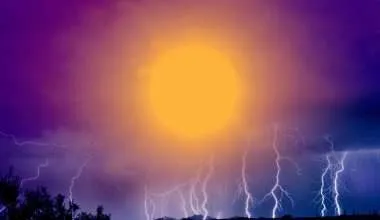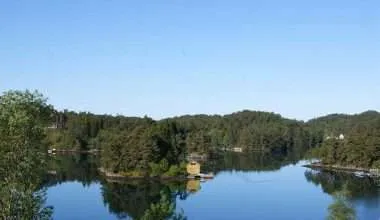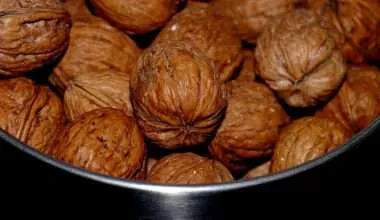Table of Contents Show
Peat is said to be an accumulation of partially decayed vegetation or organic materials found in unique areas like peat lands, mires, moors, bogs, or muskegs. Sometimes peat is also referred to as turf.
Ecosystems of peatland act as carbon sinks on the planet- storing more carbon than all other vegetation combined (0.37 gigatonnes of CO2/year). As of now they cover 3% of land on our planet and constitute more than half of wetlands on this planet.
The most important component of peat is Sphagnum moss, simply termed as ‘moss’. The mosses aid in the creation of a habitat consisting of peat formation, this is termed as “habitat manipulation”.
Peatlands such as bogs (Image at the top) are said to be the primary source of peat. However, other types of wetlands include fens, pocosins, and peat swamps. Peatlands are filled with many different kinds of plant species including ericaceous shrubs and sedges.
Peat isn’t necessarily classified as a fossil fuel or a renewable energy resource but its emission characteristics are said to be very similar to fossil fuels. However, burning peat has its own issues, we’ll discuss that ahead.
Types of peat material
Peat materials include:
- Hemic
- Sapric
- Fibric
The least decomposed of these is fibric peats that contain intact fibers. Hemic peats decompose partially whereas Sapric peat undergoes the most decomposition out of the lot.
Engineers usually describe soil with high percentage of organic materials as peat. This is problematic due to its poor consolidation properties and so cannot be compacted to serve as a stable foundation for supporting roads and buildings.
How is peat formed?
Once plant materials do not fully decay in acidic or anaerobic conditions, peat is made. And don’t get me wrong. They are decomposing, just at a rate that’s extremely slow. Hence, the rate of biomass production overwhelms the rate of decomposition.
Peat is composed mainly of wetland vegetation: principally bog plants including mosses, sedges, and shrubs. Peat starts to hold water, as it accumulates. This leads to damper conditions that allow the wetland area to expand.
Peatland features include bogs, ponds, and ridges. The characteristics of bog plants actively support bog formation. Peat has a slow growth rate, about a millimeter per year.
That’s a growth of 1 meter every 100 years!
As peat involves accumulation of organic matter over thousands of years, it allows peat deposits to provide historical records of vegetation and climate through the preservation of plants. This allows us to know more about how environment has changed over the years and study changes in land use.
Worldwide Distribution of Peatlands
Peatlands are said to be the most widespread of all wetlands types around the globe, representing 50 to 70% of the planet’s wetlands.
Recent studies have shown that the global coverage of the peatland ecosystem is about 4.23 million square kilometers (1.63 million square miles), which is about 2.84% of the world area. About 60% of the world’s wetlands are made out of peat.
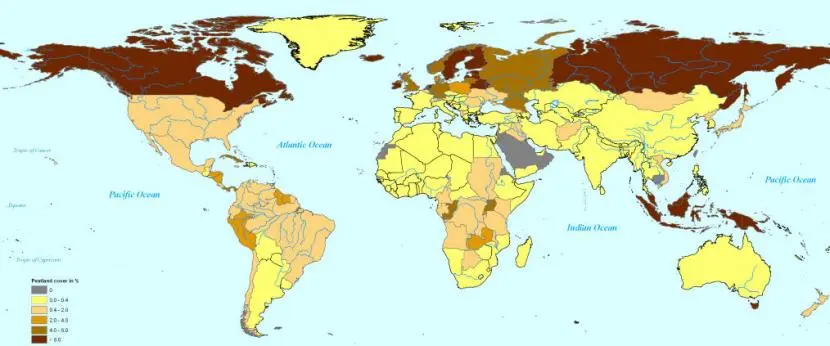
Peat deposits are found around the world, including northern Europe and North America. The peat deposits of North America are found in Canada and the Northern Part of the United States. Some of the largest peatlands in the world include west Siberian lowland, Mackenzie River valley, and the Hudson Bay lowlands.
Less peat is found in the southern hemisphere, that being said, the Magellanic Moorland in South America is an extensive landscape dominated by peat. Indonesia is host to the most tropical peatlands than any other nation on earth.
About 7% of all the peatlands have been exploited in forestry and agriculture. Furthermore, peat has the potential to be used as an extensive source of energy.
Delicious Peat Facts
- Peat is made from partially decomposed organic or plant material in waterlogged conditions
- The Flow Country, in northern Scotland, is said to be the largest area of bog in the world
- The peatlands of Flow Country have benefited from the growth of sphagnum moss and cotton grasses since the ICE AGE!
- Peatlands cover about 3% (exactly 2.84%) of the total land on the earth
- The International Union for the Conservation of Nature (IUCN) calls Peatland as a “Cinderella” Habitat that is undervalued and overlooked
- Peat is a source of energy, just like fossil fuels and other energy resources
- Peat is said to be the most efficient ecosystem when it comes to carbon collection
- Under certain conditions, peat can ignite coal over long geological periods of time
- Peat is also employed in the use of agriculture and forestry to improve fertility.
Importance of Peatlands
Peat is highly beneficial when it comes to gardening/farming. Peat can be used to make horticultural compost, which is highly sought after product in commercial horticulture because of its high water-retention capacity and ability to make air pockets in soil which make space for roots to grow. This is why farmers may drain peatlands to make use of peat.
Peat is widely being considered as a potential large scale source of electricity generation. Peat is being used by many a source of fuel and especially for heating homes in cold climate regions.
There are 4 trillion cubic meters of peat in the world by volume, covering a total of about 3% of the global land area. This area is said to contain about 8 billion tera-joules(1012) of energy. Peat can be used as a source of energy over an extended period of time.
Caution: Please don’t drain wetlands; they’re responsible for enormous amounts of carbon sequestration.
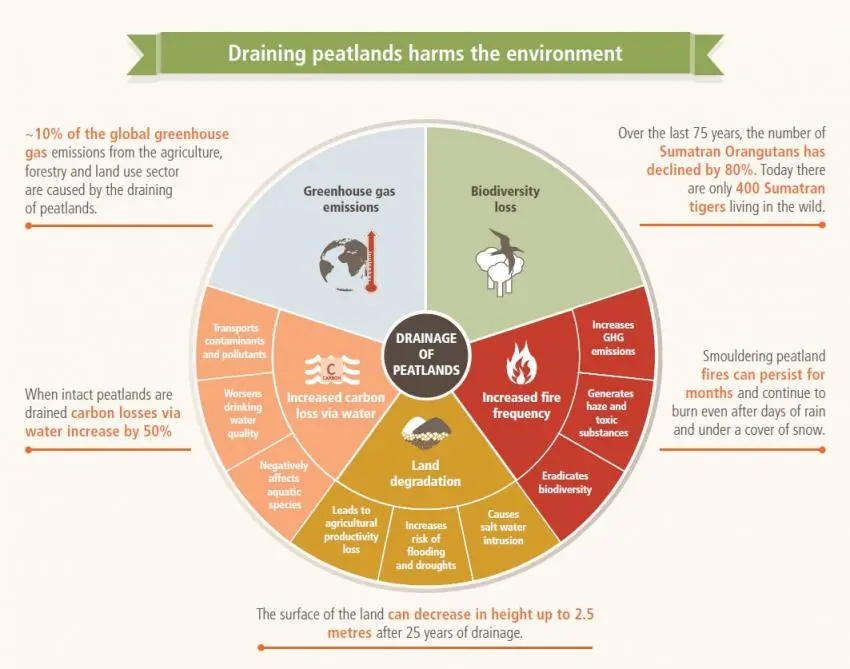
Negative Environmental Impacts of not preserving peatlands
Like all the ecosystems found on our planet, peatland is vital in maintaining the planet’s internal systems and regulating carbon cycles. However, humans have disturbed the normal peatland ecosystems in various ways causing detrimental consequences.
Peat is used in forestry and agriculture can alter the natural hydrology of the peatland. Oxidation of the carbon stored can decline the organic matter content.
During extraction, peat is drained and dried before it can be transported and sold. This process reduces water content and encourages the microbes to decompose the organic matter causing the release of greenhouse gases such as carbon dioxide, methane and nitrous oxide.
Furthermore, the drainage of peatland causes a reduction in biodiversity, due to disturbance in habitat and its natural hydrology.
For example; we have lost 60% of Bornean Orangutans over the past 60 years, mostly because of loss of peat (their habitat). This made them ‘critically endangered’ on IUCN redlist.
The drainage of peatlands also makes the peat soil susceptible to soil erosion by water and wind. Peat oxidation causes the release of dissolved organic matter and peat particles which can contaminate waterways and cause cultural eutrophication.
Constant peat oxidation leads to loss of historical heritage as peatlands are home to millions of plant and human remains which are thousands of years old. Fires may occur in peatlands if there is an excessive amount of drainage in the ecosystem which may further lead to carbon emissions.
There must be a balance between utilizing the peatlands as a source of energy, forestry, and agriculture while conserving these habitats to prevent loss of these ecosystems in future. This can be possible if we don’t over-exploit this resource, the same way we have done with other ecosystems which led to different environmental issues.
